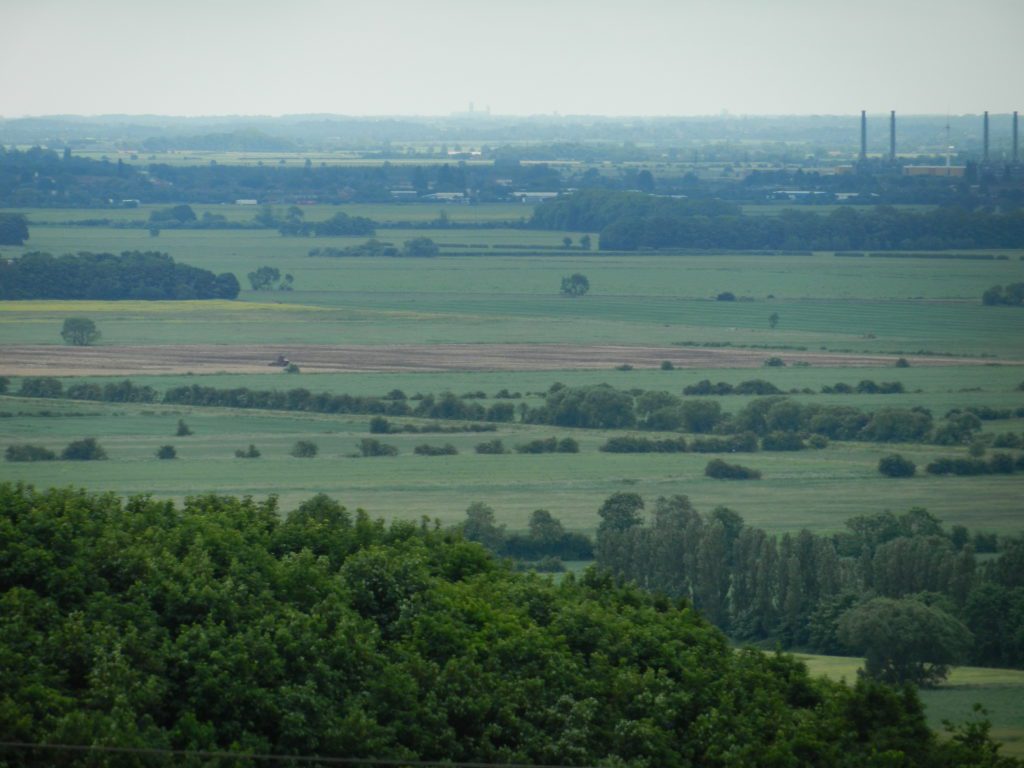
This photo shows the view south from Middlegate an ancient trackway high up the side of the scarp slope of the chalk escarpment of the northern Lincolnshire Wolds; in the middle distance can be seen some visible evidence of the town of Brigg while on the horizon can be seen in the haze Lincoln cathedral with its mighty crossing tower taller than the pair of west towers, and standing as it does on top of the limestone escarpment of the Lincolnshire Heights. Brigg stands on the floodplain of the River Ancholme at a crossing point of the River since prehistoric times. The agricultural field pattern of the Ancholme valley followed on a succession of drainage schemes dating from the 17th century. Piecemeal the Low Villages lost their wetland common land, enclosure then being by private agreement rather than by Parliamentary Enclosure of the late 18th and early 19th centuries.
Are the farmers of the land seen in the photo considering how to react to the terms of the 2020 Agriculture Act? Probably not so much yet as the annual payments based on the extent of farmland owned are to continue until 2028, although at a declining rate (this being the policy of the Common Agricultural Policy of the E.U. which we left in 2019).
The broad-sweep idea behind the Agriculture Act, 2020, is truly revolutionary. This being to substitute acreage payments with ‘public goods’ payments. In 2019 the British government withdrew from the European Community’s Common Agricultural Policy which gave farmers annual payments based on acreage owned; these will continue up to 2028 but at declining rates. Replacement ‘public goods’ refers to environmental benefit, animal welfare and soil improvement. Other benefits, potentially, are more information on where the food comes from as well improved ‘marketing standards and carcass classification’. The general idea being food production, and this is not meant to increase food dependency on foreign imports, in sustainable ways with a Food Security update every five years. Although this legislation has received broad parliamentary support, one major critiscism is that it does not impose better regulations on imported foodstuffs, particularly meat.
So what has this to do with trees?
(to be continued)